Planning worship?
Check out our sister site, ZeteoSearch.org,
for 20+ additional resources related to your search.
- |
User Links
Person Results
‹ Return to hymnal
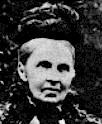
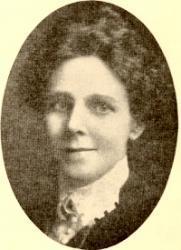

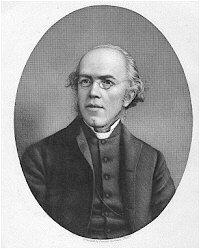
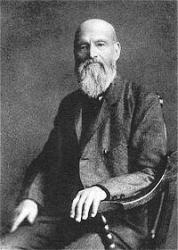
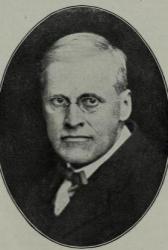
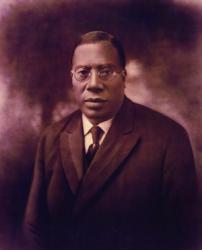
Export as CSV
Kate Hankey

1834 - 1911 Person Name: Katherine Hankey Hymnal Number: d41 Author of "I love to tell the story of unseen things above" in Reapers, Embracing the Choicest Gospel Songs and Standard Hymns, New & Old Arabella Katherine Hankey (b. Clapham, England, 1834; d. Westminster, London, England, 1911) was the daughter of a wealthy banker and was associated with the Clapham sect of William Wilberforce, a group of prominent evangelical Anglicans from the Clapham area. This group helped to establish the British and Foreign Bible Society, promoted the abolition of slavery, and was involved in improving the lot of England's working classes. Hankey taught Bible classes for shop girls in London, visited the sick in local hospitals, and used the proceeds of her writings to support various mission causes. Her publications include Heart to Heart (1870) and The Old, Old Story and Other Verses (1879).
Bert Polman
===============
Hankey, Katharine, has published several hymns of great beauty and simplicity which are included in her:—
(1) The Old, Old Story, 1866; (2) The Old, Old Story, and other Verses, 1879; (3) Heart to Heart, 1870, enlarged in 1873 and 1876. In 1878 it was republished with music by the author.
Miss Hankey's hymns which have come into common use are:—
1. Advent tells us, Christ is near. The Christian Seasons. Written for the Sunday School of St. Peter's, Eaton Square, London, and printed on a card with music by the author.
2. I love to tell the story Of unseen things above. The love of Jesus. This is a cento from No. 3, and is given in Bliss's Gospel Songs, Cincinnati, 1874, and other American collections.
3. I saw Him leave His Father's throne. Lovest than Me? Written in 1868. It is No. 33 of the Old, Old Story, and other Verses, 1879.
4. Tell me the old, old story. This Life of Jesus in verse was written in two parts. Pt. i., "The Story Wanted," Jan. 29; and Pt. ii., "The Story Told," Nov. 18, 1866. It has since been published in several forms, and sometimes with expressive music by the author, and has also been translated into various languages, including Welsh, German, Italian, Spanish, &c. The form in which it is usually known is that in I. P. Sankey's Sacred Songs & Solos. This is Part i. slightly altered.
Miss Hankey's works contain many suitable hymns for Mission Services and Sunday Schools, and may be consulted both for words and music with advantage.
--John Julian, Dictionary of Hymnology (1907)
Kate Hankey
E. W. Blandly
b. 1849 Person Name: E. W. Blandy Hymnal Number: d32 Author of "Where he leads me I will follow" in Reapers, Embracing the Choicest Gospel Songs and Standard Hymns, New & Old Rv Ernest William Blandly (sometimes spelled Blandy) United Kingdom 1849-? He was a British minister that migrated to the USA in 1884 with his wife, Eliza. He became an officer in the Salvation Army and, in 1890, felt called to live in a Manhattan New York slum called “Hell's kitchen” with gangs and low life. He wrote several hymn lyrics.
John Perry
E. W. Blandly
Civilla D. Martin

1866 - 1948 Hymnal Number: d7 Author of "God will take care of you" in Reapers, Embracing the Choicest Gospel Songs and Standard Hymns, New & Old Martin, Civilla Durfee (Jordan Falls, Nova Scotia, August 21, 1866--March 9, 1948, Atlanta, Georgia). Daughter of James N. and Irene (Harding) Holden. She married Rev. John F. Geddes, Congregational minister of Coventryvilee, N.Y. at Jordan Falls Methodist Church, Shelbourne Co., Nova Scotia, on May 19, 1891. There is thus far no information about their marriage and its end. After several years of teaching school, she married Walter Stillman Martin, a Baptist minister, and traveled with him in evangelistic work. However, because of frail health, she was compelled to remain home much of the time. In 1916, they became members of the Christian Church (Disciples of Christ). They had one son, A.G. Martin. In her writing, she used only her initials, "C.D." rather than her full name of that of her composer-husband. She is reputed to have written several hundred hymns and religious songs. Her first one, "God Will Take Care of You," written in 1904 became world-famous. Her husband wrote the music for this and many of her other hymns. "His Eye is on the Sparrow" written in 1906 and set to music by Charles H. Gabriel, has also received wide acclaim. In addition to the above, "Like As A Father," "A Welcome for Me," and "The Blood Will Never Lose Its Power" are among her better-known hymns.
Her husband and collaborator, W.S. Martin (1862-1935) preceded her in death. For the last 29 years of her life, she made her home in Atlanta, Georgia, where she was a member of the First Christian Church. Her funeral was held on March 10, 1948 at Spring Hill and the interment was in the West View Cemetery in Atlanta.
--Carlton C. Buck, DNAH Archives and email from Rev. Lester M. Settle (Glenholme, Nova Scotia) to Mary Louise VanDyke 18 September 2008, DNAH Archives.
Civilla D. Martin
Washington Gladden

1836 - 1918 Hymnal Number: d74 Author of "O Master, let me walk with thee [you]" in Reapers, Embracing the Choicest Gospel Songs and Standard Hymns, New & Old Washington Gladden (1836-1918) was called to the First Congregational Church in Columbus, OH in 1882 and remained there for 32 years. In 1883-84 he was known for his success in fighting the corrupt Tweed Ring, for arbitrating the Telegraphers' Strike and the Hocking Valley Coal Strike. He attacked John D. Rockefeller, Sr. for giving $100,000 of "tainted money" to the Congregational Church's Foreign Missions program. Throughout his ministry he emphasized applying the gospel to life in America. He wrote "O Master, let me walk with thee" in 1879.
Mary Louise VanDyke
===================
Gladden, Washington, was born at Pottsgrove, Pennsylvania, Feb. 11, 1836; was educated at Williams College: and entered the Congregational Ministry. He was for some time editor of the New York Independent, and of the Sunday Afternoon. In the Sunday Afternoon, his hymn, "O Master, let me walk with Thee" (Walking with God), appeared in 3 stanzas of 8 lines, in March 1879. Of these stanzas i. and iii. are in Laudes Domini, 1884, and others.
--John Julian, Dictionary of Hymnology, Appendix, Part II (1907)
==================
Gladden, W., p. 1565, ii. Dr. Gladden has been Pastor of the First Congregational Church, Columbus, Ohio, since 1882. His hymn-writing has not been extensive. The most popular of his hymns is "0 Master, let me walk with Thee," noted on p. 1565, ii. It has come into somewhat extensive use during the last ten years. Additional hymns in common use include:—
1. Behold a Sower from afar. [The Kingdom of God.] In the Boston Pilgrim Hymnal, 1904, this is dated 1897.
2. Forgive, 0 Lord, the doubts that break Thy promises to me. [Doubting repented of.] Dated 1879, in The Pilgrim Hymnal, 1904.
--John Julian, Dictionary of Hymnology, New Supplement (1907)
Washington Gladden
Frederick Whitfield

1829 - 1904 Hymnal Number: d107 Author of "O how I love Jesus" in Reapers, Embracing the Choicest Gospel Songs and Standard Hymns, New & Old Whitfield, Frederick, B.A., son of H. Whitfield, was born at Threapwood, Shropshire, Jan. 7, 1829, and educated at Trinity College, Dublin, where he took his B.A. in 1859. On taking Holy Orders, he was successively curate of Otley, vicar of Kirby-Ravensworth, senior curate of Greenwich, and Vicar of Stanza John's, Bexley. In 1875 he was preferred to St. Mary's, Hastings. Mr. Whitfield's works in prose and verse number upwards of thirty, including Spiritual unfolding from the Word of Life; Voices from the Valley Testifying of Jesus; The Word Unveiled; Gleanings from Scripture, &c. Several of his hymns appeared in his Sacred Poems and Prose, 1861, 2nd Series, 1864; The Casket, and Quiet Hours in the Sanctuary. The hymn by which he is most widely known is I need Thee, precious Jesu.” Other hymns by him in common use include:~
1. I have a Great High Priest above. Christ the High Priest.
2. I saw the Cross of Jesus. The Cross.
3. In spirit, Lord, we meet Thee now. Missions. This was written at the request of the Committee of the Irish Church Missions for one of their annual meetings in London.
4. Jesus, Thou Name of magic power. The Name of Jesus. Sometimes given as "Jesus, Thou Name of power divine."
5. The sprinkled blood is speaking. The Blood of Christ.
6. There is a day I long to see. Heaven Anticipated.
7. There is a Name I love to hear. The Name of Jesus. Published in 1855 in hymnsheets and leaflets in various languages. From this the hymn “Jesus, the Name I love so well" is taken.
8. There's naught on earth to rest upon. God Unchangeable.
9. When dead in sin and far from God. Redemption.
All these hymns, with the exception of No. 3, are in his Sacred Poems and Prose, 1861, and several of them have been printed as leaflets, and set to special music. The Sacred Poems, &c, contains 26 hymns, some of which are of considerable merit.
-- John Julian, Dictionary of Hymnology (1907)
Frederick Whitfield
W. P. Mackay
1839 - 1885 Person Name: William P. Mackay Hymnal Number: d123 Author of "Revive us again" in Reapers, Embracing the Choicest Gospel Songs and Standard Hymns, New & Old Mackay, William Paton, M.D., was born at Montrose, May 13, 1839, and educated at the University of Edinburgh. After following his medical profession for a time, he became minister of Prospect Street Presbyterian Church, Hull, in 1868, and died from an accident, at Portree, Aug. 22, 1885. Seventeen of his hymns are in W. Reid's Praise Book, 1872. Of these the best known is "We praise Thee, O God, for the Son of Thy love" (Praise to God), written 1863, recast 1867. [Rev. James Mearns, M.A.]
--John Julian, Dictionary of Hymnology, Appendix II (1907)
======================
Born: May 13, 1839, Montrose, Scotland.
Died: August 22, 1885, Portree, Scotland, of an accident.
Mackay graduated from the University of Edinburgh and initially worked as a doctor. However, he was ordained, and in 1868 became pastor of the Prospect Street Presbyterian Church in Hull. He married Mary Loughton Livingstone 1868 in Kingston Upon Hull, Yorkshire; they were living in Sculcoates, Yorkshire, as of 1881. Seventeen of his hymns appeared in W. Reid’s Praise Book in 1872.
Sources:
Hustad, p. 278
Julian, p. 1667
Reynolds, p. 365
http://www.hymntime.com/tch/bio/m/a/c/mackay_wp.htm
W. P. Mackay
Erastus Johnson

1826 - 1909 Hymnal Number: d76 Author of "The Rock that is higher than I" in Reapers, Embracing the Choicest Gospel Songs and Standard Hymns, New & Old Johnson, Erastus. (April 20, 1826--June 16, 1909, Waltham, Massachusetts). This man whose life was singularly active and varied was born in a logging camp at Lincoln, Maine. He was buried in Jackson, Maine. He entered the Academy at Calais, Maine, at the age of fifteen, spent two years there, taught school for the next six, and then entered Bangor Theological Seminary. His health failed, and, threatened with the loss of his sight, was compelled to give up preparation for the ministry. On the advice of his physician he took a sea voyage, embarging on the ship Gold Hunter en route from New York to California. The crew of the ship mutinied just before rounding Cape Horn and as Johnson was the only person on board who knew anything about navigation, other than the captive officers, he was pressed into service to take the ship on to its destination, San Francisco. This he was able to do successfully. Not a seeker after California's newfound gold, he was, variously, a rancher in California, a farmer in Washington state, in the oil business in Pennsylvania for some twenty years, and again a farmer in Maine until his retirement in Waltham, Mass. As ardent Methodist, always interested in religious work, especially in the Y.M.C.A., he was a lifelong student of the Bible, a fluent speaker, and a musician of moderate attainment. He published one book of poems, most of which were of interest only to members of his immediate family.
Sources: Correspondence with Mrs. Julia Johnson Howe, daughter of the subject of this sketch; Our Hymnody, Robert G. McCutchan; Hymns of Our Faith, Reynolds.
--Robert G. McCutchan, DNAH Archives
Erastus Johnson
Lida Shivers Leech
1873 - 1962 Hymnal Number: d10 Author of "Trust me, try me, prove me, saith the Lord of hosts" in Reapers, Embracing the Choicest Gospel Songs and Standard Hymns, New & Old Born: July 12, 1873, Mayville, New Jersey.
Died: March 4, 1962, Long Beach, California.
Leech spent her childhood in Cape May Court House, New Jersey, and attended Columbia University and Temple University. She played the organ at Bethany Methodist Church in Camden, New Jersey, served as accompanist at evangelical services, and wrote some 500 hymn tunes in her lifetime.
Sources--
Emurian, pp. 112-3
Reynolds, p. 336
Lyrics--
God’s Way Is Best
I Have Redeemed Thee
I’ll Go Anywhere
No Fault in Him
Some Day He’ll Make It Plain
Thine for Service
Trust Me, Try Me, Prove Me © 1928
When the Veil is Lifted
--www.hymntime.com/tch
Lida Shivers Leech
Judson W. Van DeVenter

1855 - 1939 Person Name: Judson W. Van de Venter Hymnal Number: d44 Author of "Sunlight, sunlight in my soul today" in Reapers, Embracing the Choicest Gospel Songs and Standard Hymns, New & Old Judson W. Van DeVenter was born 15 December 1855 on a farm near the village of Dundee, Michigan. He was educated in the country and village schools, and at Hillsdale College. He later moved to St. Petersburg, Florida. He wrote about 100 hymns.
Dianne Shapiro, from "The Singers and Their Songs: sketches of living gospel hymn writers" by Charles Hutchinson Gabriel (Chicago: The Rodeheaver Company, 1916)
Judson W. Van DeVenter
Charles Albert Tindley

1851 - 1933 Hymnal Number: d48 Author of "Leave it there, leave it there, take your burden" in Reapers, Embracing the Choicest Gospel Songs and Standard Hymns, New & Old Charles Albert Tindley was born in Berlin, Maryland, July 7, 1851; son of Charles and Hester Tindley. His father was a slave, and his mother was free. Hester died when he was very young; he was taken in my his mother’s sister Caroline Miller Robbins in order to keep his freedom. It seems that he was expected to work to help the family. In his Book of Sermons (1932), he speaks of being “hired out” as a young boy, “wherever father could place me.” He married Daisy Henry when he was seventeen. Together they had eight children, some of whom would later assist him with the publication of his hymns.
Tindley was largely self-taught throughout his lifetime. He learned to read mostly on his own. After he and Daisy moved to Philadelphia in 1875, he took correspondence courses toward becoming a Methodist minister. He did this while working as a sexton (building caretaker) for the East Bainbridge Street Church. Beginning in 1885, he was appointed by the local bishop to serve two or three-year terms at a series of churches, until coming full circle to become pastor at East Bainbridge in 1902. Under his leadership, the church grew rapidly. They relocated in 1904 to the East Calvary Methodist Episcopal Church, then again in 1924 to the new Tindley Temple, where the membership roll blossomed to about ten thousand.
Tindley was known for being a captivating preacher, and for also taking an active role in the betterment of the people in his community. His songs were an outgrowth of his preaching ministry, often introduced during his sermons. Tindley was able to draw people of multiple races to his church ministry; likewise, his songs have been adopted and proliferated by white and black churches alike.
The songs of Charles Tindley were published cumulatively in two editions of Soul Echoes (1905, 1909) and six editions of New Songs of Paradise (1916-1941).
His wife Daisy died in 1924, before the completion of the Tindley Temple. He remarried in 1927 to Jenny Cotton. Charles A. Tindley died July 26, 1933.
Charles Albert Tindley


 My Starred Hymns
My Starred Hymns


